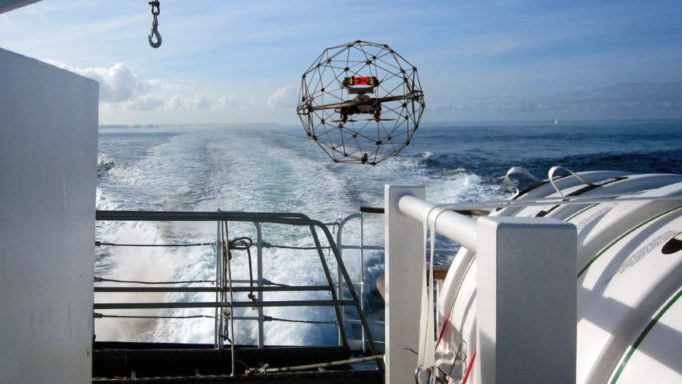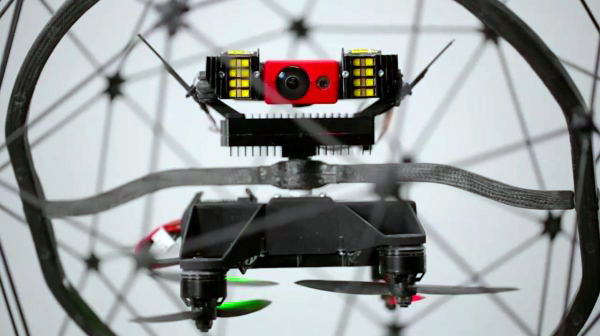UAS advancements are increasingly impacting our everyday lives, from agriculture and filmmaking to security and communications down to the products we have delivered. Its advances present major changes for the future of the maritime industry. As disruptive as the smartphone has been to the world, the use of drones will revolutionize the landscape of ship operations for years to come. Drones are quickly becoming a regular tool in the maritime industry, although developed for government and military operations, over the next half a decade, growth in the commercial and civilian drone industry is expected to surpass defense industry, with an estimated value of $127 billion. As the development of UAS technology gathers momentum, we’re going to see UAS used more and more in maritime applications than ever before. Drones can safely go where humans can’t. Improving safety, reducing costs, speeding up processes and making access challenges a breeze, are just a handful of the benefits of using drones in the maritime industry.
Improving Ship Safety & Speeding up Maintenance & Repairs

Replacing the need for human inspections, routine maintenance can be monitored remotely in real-time by surveyors, providing instant feedback to the vessel or offshore Superintendent. This, in turn, reduces costs, increases efficiency and significantly reduces the risk to human life during essential maintenance.
Tank inspections are common tasks onboard vessels and are always a risk to the participating crewmembers. Dangerous gases are the biggest killer at sea: often, a crewmember will enter an enclosed space – unbeknownst to them, that it contains a noxious gas. Unfortunately, often they will become unconscious and suffocate. However, this can be completely avoided by the use of a drone. Easy and quick analysis will determine the safety of the tank for entry – saving lives with just a matter of minutes of drone flight. Equally, video feedback can be used to identify if human inspection is even required, completely removing any threat to human lives.
Aside from the safety and efficiency aspects, shipping companies also want to avoid typically three things: whales, icebergs and pirates. Since the advancements of drones have allowed imagery from over 30km away, dealing with the task of hazard avoidance has become far easier for commercial shipping companies.
Reducing Costs
Drones can be operated by one person without any extensive safety equipment, meaning the costs associated can be significantly reduced. UAS are so quick to deploy in comparison to traditional methods, reducing downtime.
The use of drones for delivery has become a fast-approached topic in the maritime industry, a topic that has now become a reality. The use of drones, rather than launch boats could help to reduce costs by up to 90% for vessel operations and ship managers. Research has shown that on average, the cost of a launch boat is $1,500 per hire. However, it can be as much as $4,000 depending on port locations, and it’s been estimated to save the entire industry upwards of $675 million.
Making Access Challenges a Breeze

Drones can be flown into high up or hazardous areas to check the structural integrity of a vessel or of loaded cargo. Whereas previously this high-risk job was down to a crewmember, now a drone can be flown to the inspection point, and with a high definition video feedback to the control centre, not only does this mitigate any risk, it is also far quicker.
While much has been made of re-supplying ships whilst at sea, especially since the evolution of drones, this task has become a far simpler concept. Although initial tests show multiple hurdles have yet to be overcome to make this option of delivery viable — Are the use of drones disrupting the maritime industry as we know it? Since the first trial in January 2016, when a drone made an at-sea delivery, the industry rut began to budge. Although only travelling a distance of 247 meters and was launched from a smaller tug-boat rather than from the shore, the optimism and promising signs were ever present. However, there are still far more speed bumps to overcome, from improving the distance a drone can travel to its ability to handle heavy and large loads. Until these progressions take place, UAS technology is currently primarily being focused on inspection and surveillance.
Drones are only one small part of the bigger puzzle in helping transform and disrupt the maritime industry. What do we know? That UAS play a critical component in the future of the maritime industry in increasing its effectiveness, efficiency and safety and before we know it, the maritime industry will be altered forever.
